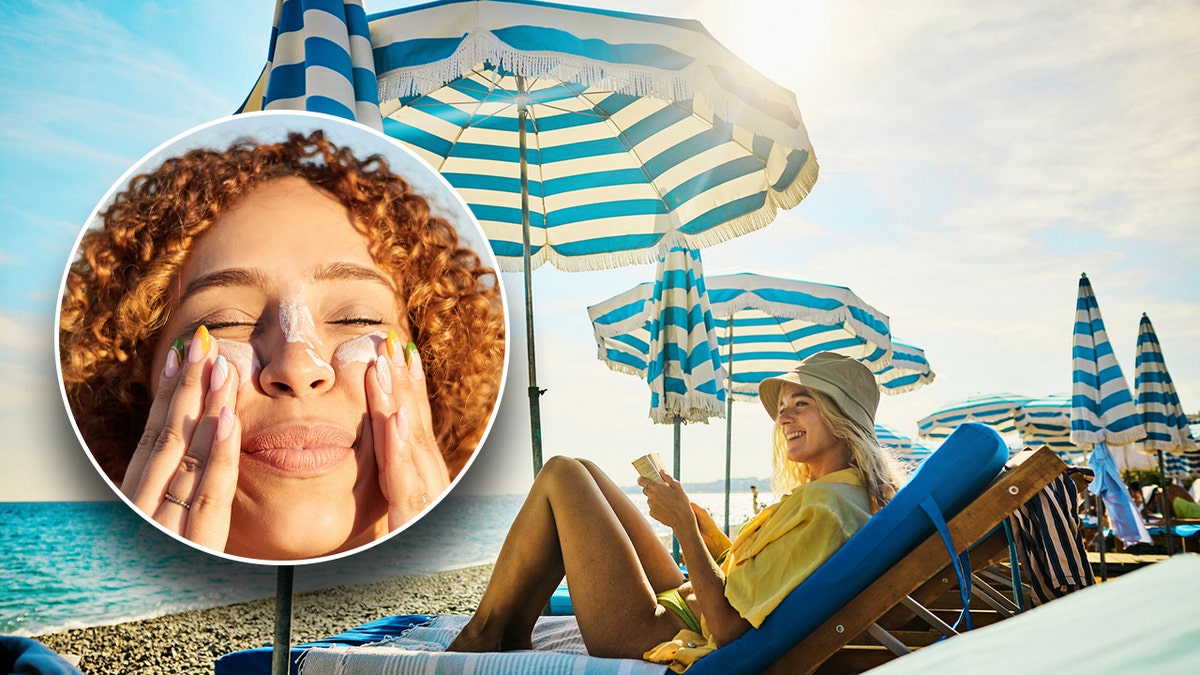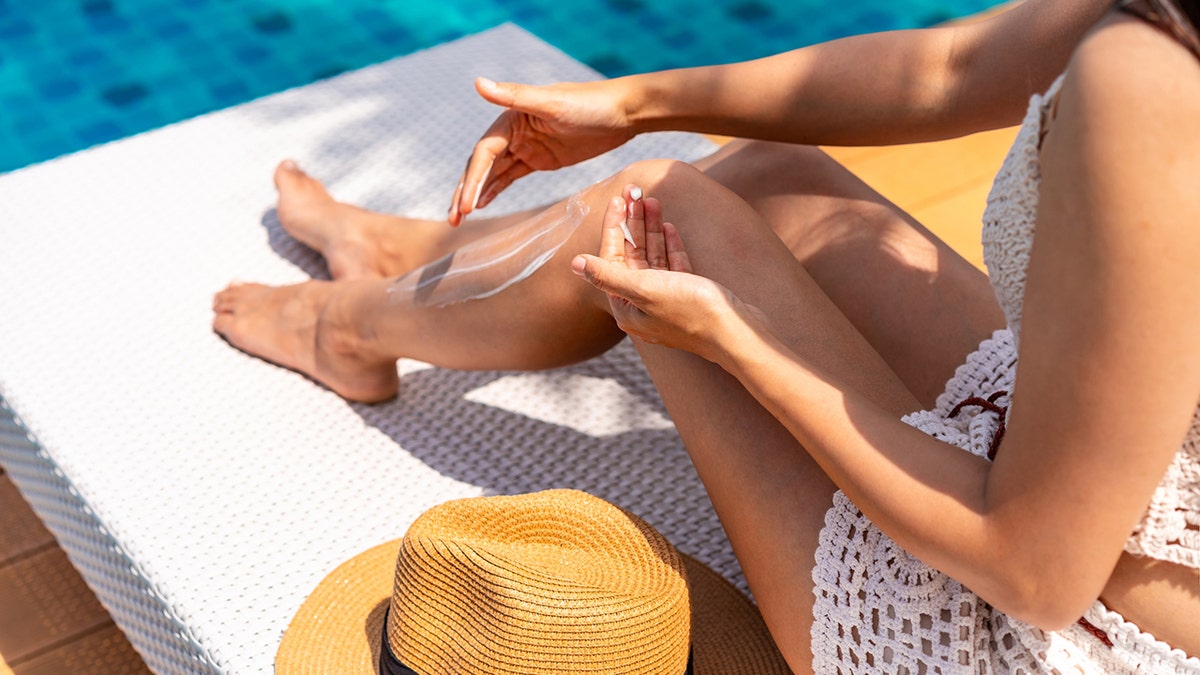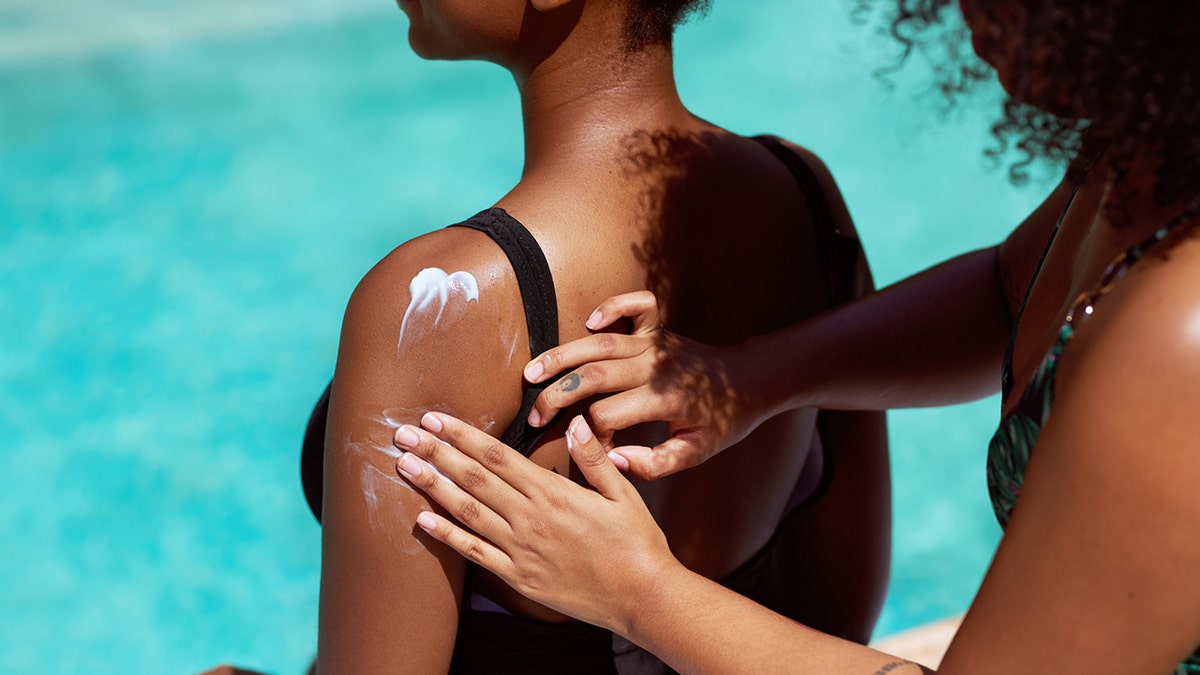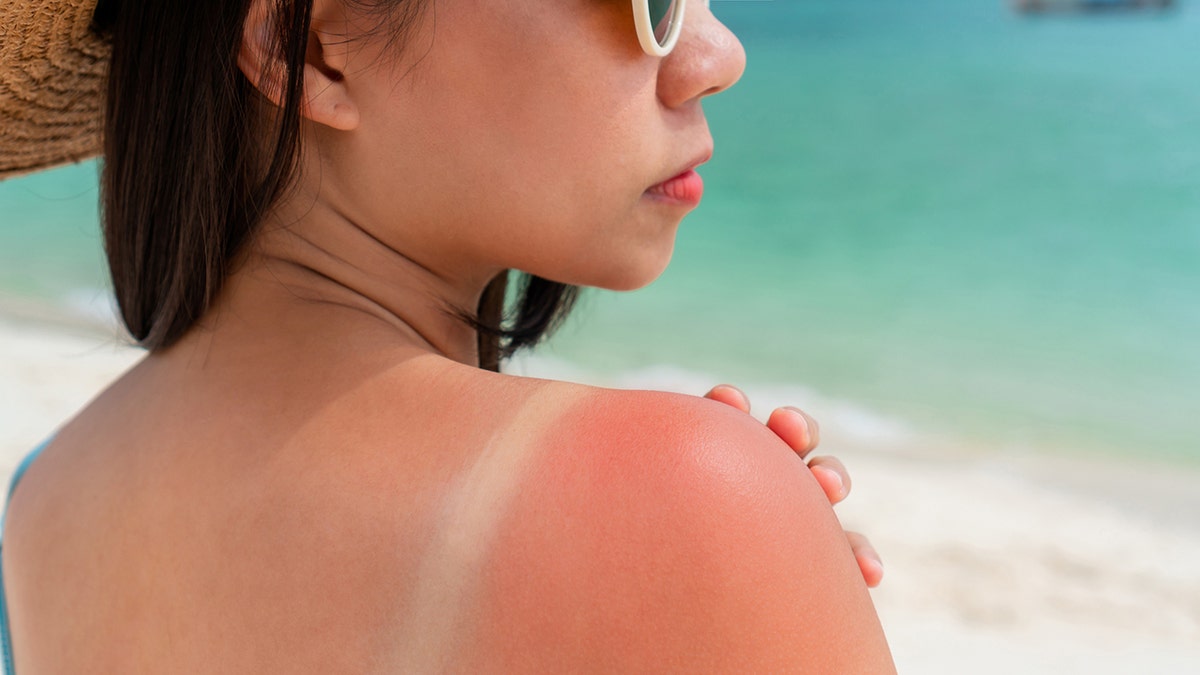Sunscreen 101: what to know before you head outside
Top dermatologist shares her favorite sunscreens
When spending time out in the sun, it's vital to protect your skin by applying sunscreen.
Skin cancer is a leading type, with one in five Americans developing it in their lifetime, according to the American Academy of Dermatology. Around 9,500 people in the U.S. are diagnosed with skin cancer each day, according to the source. The most common types of skin cancer are basal cell carcinoma, squamous cell carcinoma and melanoma.
Although there are other underlying factors that can cause skin cancer, like age and gender, you can help keep your skin safe by wearing protective gear while outside and wearing sunscreen properly.
WHAT SPF SHOULD YOUR SUNSCREEN HAVE? FIND OUT HOW IT MAY HELP PREMATURE AGING AND SKIN CANCER
Protective gear includes a pair of sunglasses and a hat to protect your head and scalp. You can also wear protective clothing to cover your skin while outside in the hot sun.
When it comes to sunscreen, it's essential to apply evenly and to not forget to reapply while you're spending time outside. If you are with others, remind friends and family to reapply.

This summer, whenever you're going to be spending any time outside, throw sunscreen in your bag and apply it regularly to protect your skin. (iStock)
- What is SPF?
- What is UVA and visible light?
- How do I measure sunscreen?
- How much sunscreen should I use per application?
- Which sunscreens are best for the face vs. body?
- Which SPF number is best for face application?
- What ingredients should I look for in sunscreen?
- How do I prevent sunscreen white cast?
- Which sunscreens are best for sensitive skin and skin conditions?
- How often should I reapply sunscreen?
- How do I treat a sunburn?
1. What is SPF?
Sun Protection Factor, commonly known as SPF, is the measure of how much UV radiation is needed to produce sunburn on protected skin compared to unprotected skin, according to the Food and Drug Administration (FDA).
The SPF rating scale for sunscreen indicates the level of sunburn protection a person can receive if applied correctly.
"As the SPF value increases, sunburn protection increases," the FDA says.
BEACH SAFETY TIPS: 7 THINGS TO DO IN A RIP CURRENT AND HOW TO STAY SAFE NEAR THE WATER
"[But] SPF is not directly related to [the] time of solar exposure but to [the] amount of solar exposure."
The amount of UV radiation that comes from the sun varies throughout the day.
So, an hour of sun exposure at 9 a.m. could be equivalent to 15 minutes of sun exposure at 1 p.m, the FDA states on its web page about SPF.
How is this possible? The sun’s rays are at their strongest between 10 a.m. and 4 p.m., according to the U.S. Environmental Protection Agency.

The higher the SPF on your sunscreen, the more protected your sun is from getting burned. (iStock)
This means people who are outside during the other 18 hours of the day are exposed to a lower level of UV radiation, but health experts universally agree that sunscreen should be worn for added protection.
2. What is UVA and visible light?
While UVB is associated with skin burning, UVA is associated with skin aging.
Both forms of UV contribute to skin cancer risks, according to the Centers for Disease Control and Prevention.
Broad-spectrum sunscreens are formulated to protect people from harmful UVA and UVB rays. A label denoting a sunscreen’s broad spectrum capability should be present on the product’s packaging, according to Dr. Henry Lim of Henry Ford Health, a not-for-profit health care organization in Detroit.
WHAT IS SKIN CANCER? HOW TO SPOT THE SIGNS AND WHEN TO SEEK HELP
Aside from UV rays, there’s visible light, which can cause erythema, superficial reddening of the skin and tanning in people who have dark skin, according to a Photochemical & Photobiological Sciences study in the National Library of Medicine.
"If one were to protect against the visible light, which I think is important for darker skin individuals, then tinted sunscreen would be the one to use because we know that visible light can cause very significant tanning and long-lasting tanning on your skin," Lim told Fox News Digital.
"So, we want to minimize that effect to prevent the blemishes," he continued. "That could be darkened with sun exposure."
3. How do I measure sunscreen?
Applying two milligrams of sunscreen to each square centimeter of skin can be a tricky task.
This is especially true for Americans who are not familiar with the metric unit of measurement in their daily lives.
Dermatologists have come up with an easier sunscreen measurement system called the "rule of nines" — and it uses teaspoons in place of milligrams.
"It is essentially one teaspoon for the face, head and neck. One teaspoon for the forearm and arm, each. So, one teaspoon for left, one teaspoon for right," Lim told Fox News Digital.

You don't need a lot of sunscreen to keep your skin safe, but make sure you are applying evenly on every part of the exposed skin. (iStock)
"And two teaspoons for the [torso’s] front and back and then two teaspoons for the left leg and two teaspoons for the right leg. So, it's nine teaspoons total."
"That translates to about one ounce or one shot glass of sunscreen," Lim continued.
"Most individuals do not use that much. Usually, most individuals who have been studied over and over use about 0.8- to 1-milligram per centimeter square. So, it's actually one-half of what the FDA recommends."
4. How much sunscreen should I use per application?
Per the FDA’s sunscreen testing, the agency recommends two milligrams of sunscreen for every square centimeter of exposed skin.
Water-resistant sunscreens should be used if a person decides to go swimming at the beach or pool or does an activity that could cause profuse sweating.
While the FDA is clear about how much sunscreen should be used for maximum protection, few people apparently wear their sunscreen at the recommended amount — if at all.
"Generally, there has to be a balance because what happens is that we do know that the average public, including ourselves, when we put on the sunscreen, we don't put on that 2-milligram-per-centimeter-square, which is the one that is used for testing purposes mandated by the FDA," Lim said.
"So, automatically, the end-use SPF is going to be lower than the labeled SPF because of the inadequate application as compared to the amount that is used for testing," Lim continued.
He said dermatologists typically recommend SPF 30 as a starting point. If used correctly, the SPF rating would filter out 97% of UVB rays, the wavelength that’s associated with skin burning, which is 4% higher than the amount SPF 15 filters out.
However, again, since most people may not wear sunscreen at the recommended amount, a slightly higher SPF "would compensate for under-application while still providing relatively good protection," according to Lim.

For hard-to-reach places, like your shoulders and back, ask a friend to help you apply sunscreen to those areas. (iStock)
For people who are going to be exposed to the sun for a long period of time, they can choose a sunscreen that is at least SPF 50, said Lim.
5. Which sunscreens are best for face vs. body?
Commercially manufactured sunscreens generally fall into the lotion, cream, gel, oil or spray categories. Each can be used on the body, but lotions, creams, oils and gels are better suited for the face because aerosol products can be irritating to the eyes, nose and lungs, experts warn.
Even still, spray sunscreens are popular among consumers and can be found in most stores.
"About 50% of the sunscreens that are now sold in the U.S. are in spray form," said Dr. Darrell Rigel, clinical professor at the Mount Sinai Icahn School of Medicine in New York City.
"Sprays are good and bad. Sprays are good in that you get to cover a lot of areas very quickly, but sprays are bad in that a lot of times you don’t know what you’ve missed," Rigel continued.
7 WAYS TO STAY SAFE IN THIS SUMMER'S SCORCHING HEAT
"I tell people honestly, spray a full coat on and then spray a second coat on and let’s hope you don't miss the same place twice."
While almost any sunscreen used on the face is better than going without, some textures and formulations might feel better than others.
"The vehicle, what the sunscreen is put in to deliver it — that makes a difference for face and body," Rigel told Fox News Digital.
FLORIDA DOCTOR REVEALS ON TIKTOK THE 5 MOST DANGEROUS WATER TOYS FOR CHILDREN THIS SUMMER
"You wouldn't want something really greasy on your face, right? Because it can make you break out. You want something lighter on your face, just like when you're looking for a moisturizer or something."
He continued, "Your body wants something a little more substantial. What's really more important than the greasiness or thinness of it is what's called substantivity, which is, how long does the sunscreen last before it breaks down and has to be applied. And, typically, the heavier sunscreens tend to last a little longer."
However, there is not much of a difference between face and body sunscreens, Rigel said.

Lotion sunscreen is more suitable for your face than a spray. (iStock)
The cosmetics industry makes more of a distinction than there really is.
That said, if you're looking for an easy application for your face, a sunscreen that comes in a lotion or even stick form provides that seamless process.
6. Which SPF number is best for face application?
Since most people under-apply sunscreen, Rigel said he recommends a higher SPF for the face.
"With people using 25% to 50% of the rated amount that they apply, you're only going to get 25% to 50% of the SPF protection that’s on the label," Rigel said. "So, the real advantage of a higher SPF is that they're more forgiving in real-world situations."
"In general, I tell people to use a minimum of SPF 50 because they under-apply, if they put 25% on they're going to get SPF 12, if they put on 50% they're going to get SPF 25," Rigel continued.
"One-third of all skin cancers of the body occur on the nose. Everybody’s nose sticks out and catches the sun over a lifetime. So, therefore, I tend to recommend a little stronger amount on the face that’s chronically exposed."
For more Lifestyle articles, visit www.foxnews.com/lifestyle
Other areas where skin cancer is commonly found include the lips, ears and scalp, and this usually happens "because they're not normally protected," Rigel said.
7. What ingredients should I look for in sunscreen?
Sunscreens fall into two classes, according to Rigel: organic and inorganic.
"The organic sunscreens are the ones we typically think of – that oxybenzone and the octinoxate and all the other things that are in that in a traditional sunscreen," he said.
"The advantage of those is they tend to be clear, and they are less obvious on the skin. They get absorbed in the upper layer of the skin, so they’re a bit more water-resistant when you're in the pool."
Rigel continued, "The inorganic sunscreens are the zinc oxides or the titanium dioxides. Those are more like a coating on the skin, and they reflect the sun's ultraviolet rays, as opposed to the organic sunscreens."

There are two main types of sunscreen you can find at a local retailer: organic and inorganic. (iStock)
He added that inorganic sunscreens work by absorbing ultraviolet radiation and converting it to harmless red light, which isn’t visible to the naked eye in a bright room.
"That's what [inorganic sunscreens] do," Rigel said. "They take you from a dangerous wavelength to a non-dangerous wavelength."
"The best sunscreens have a little of both in them," he noted. "They give you the advantage of the reflection, and they also have water resistance."
8. How do I prevent sunscreen white cast?
If you’re not a fan of sunscreen because it leaves a white film on your skin, you’re not alone.
"This is a real issue, especially if you're a darker skinned individual," Rigel said. "To use the zinc or titanium, you're going to have like a whitish sheet on your face.
If this is a sunscreen woe that ails you, Rigel recommends sunscreens that have iron oxide, which is a common mineral used in cosmetic manufacturing for its darker pigment.
"What I tell people is try the sunscreen on the back of your hand and see how you like the feel of it, how you like the look of it. Is it fine?" Rigel said.
CLICK HERE TO SIGN UP FOR OUR LIFESTYLE NEWSLETTER
"If you like it, and it matches, then you could put it on the other areas that are exposed to see how you do."
He noted that while a person’s hands will likely be a different tone from their face, it’s still fairly close because both areas have received sun exposure over the years.
"It’s the best way to get a feel for what's good, what's not and what's going to work for you," he said in reference to the technique.
"The best sunscreen, in general, is the one you're going to use," Rigel added.
"It’s no good when it's in the bottle. That's why the cosmetic acceptability is very important, too."
9. Which sunscreens are best for sensitive skin and skin conditions?
People who have sensitive skin or a skin condition usually benefit from choosing sunscreen that’s in harmony with their skin.

If you have sensitive skin, take extra caution when looking at the formula of the sunscreen you are looking to buy to prevent your skin from reacting against it. (iStock)
Certain textures work better with certain skin types.
"It goes back to the formulation," said Rigel. "If you have acne, you don't want to apply something that's very greasy to your face. So, there are gels, which are alcohol-based, that will not be as greasy for that, and they’re also not going to cause acne."
"What I tell patients in general, if you’re putting on a sunscreen that's leaving an oil slick behind you in the water, then it’s probably too heavy for you."
"If you have eczema or psoriasis, you probably wouldn't want something that's too drying," Rigel said.
"So, you might not want the gel, you might want the cream or the lotion or something that's better."
10. How often should I reapply sunscreen?
Putting on sunscreen once in the morning before going outside is not enough. The Skin Cancer Foundation recommends reapplying sunscreen at least every two hours.
CLICK HERE TO GET THE FOX NEWS APP
When you're out in the sun, be sure to keep track of how long you are outside, and reapply accordingly.
Make sure that you apply sunscreen evenly on any part of the body exposed to the sun.
Have a friend apply to the spots you can't reach. If you are alone and need to apply sunscreen to your back, you can find applicators online that can help you get hard to reach areas.
11. How do I treat a sunburn
Sunburns are hard to prevent sometimes.
You may have spent a little too much time in the sun without reapplying.
Maybe you missed that tough-to-reach spot on your back. Sunburns are bound to happen even when precautions are taken.

If you do get a sunburn, you can get relief by applying cooling aloe vera to the damaged skin. (iStock)
It’s important to know how to treat burns when the skin has been unprotected.
If you get a sunburn, it can be extremely painful on the body.
To relieve your burn, take a cool shower and moisturize the skin with aloe vera. You can also take pain medication like aspirin if necessary.





















